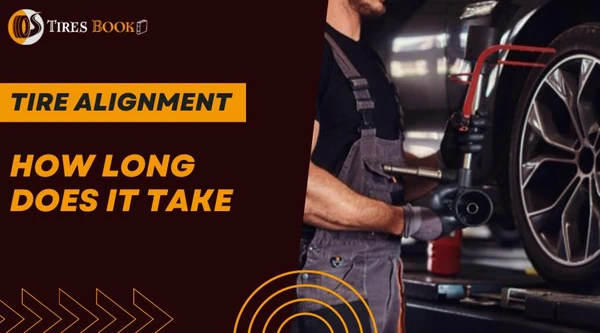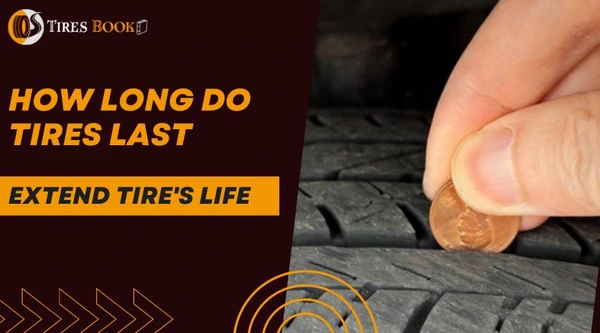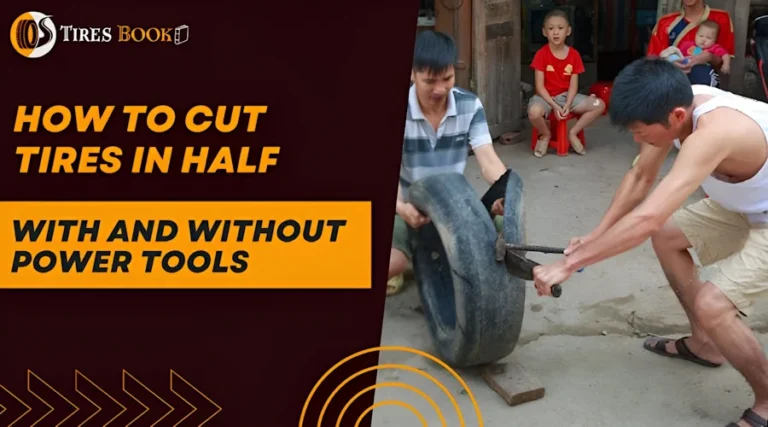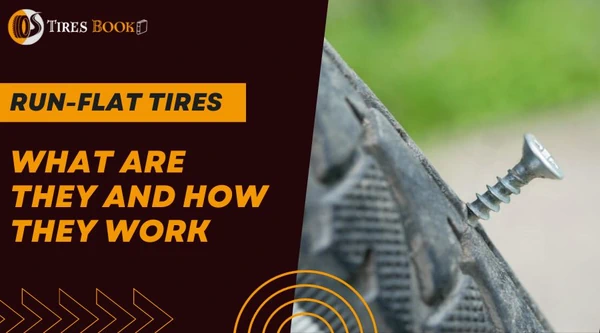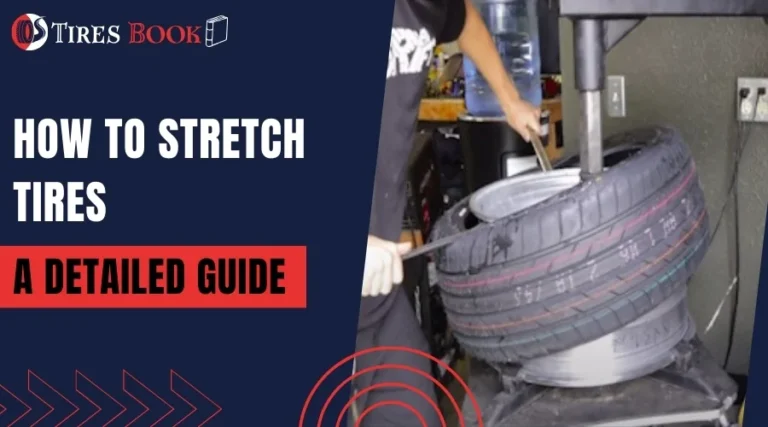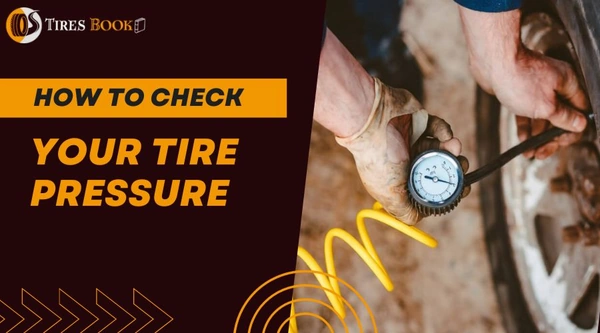I am Solomon Osuagwu, an automotive tire expert having more than a decade of hands-on experience in automotive workshop and tire repair service. In this article, I will share some tips on preserving your car tire from a flat spot during long winter storage.
Many car owners in snowy regions often store their vehicles in their garage during the winter season. If you are one of them, you should know how to properly preserve the vehicle tires as prolonged storage of the vehicle can cause a flat spot on the tire’s contact patch.
Table of Contents
What to Put Under Tires When Storing A Car?
- Tire cushions or rubber mats
- Wooden blocks
- Inflation to maximum pressure
- Use jack stands
- Plastic sheets
- Tire foam
Use Tire Cushions/Rubber Mats
To prevent a flat spot on tires during winter storage, you can use tire cushions or rubber mats. They are excellent for supporting your car’s tires during storage. You can also use exercise mats that you often see in the gyms. They provide a soft layer between the tire and the ground thereby preventing flat-spotting and moisture damage.

Use Wooden Blocks
Wooden blocks also serve the same purpose. They provide a smooth layer between the tires and the ground surface. Moreover, they distribute the vehicle’s weight evenly and help prevent sinking into soft ground. Also, they don’t interact with the tire’s rubber compounds chemically and prevent cracking.
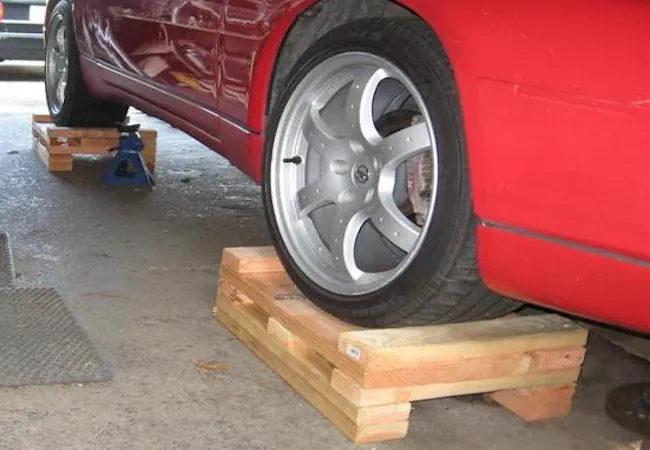
Inflation to Maximum Pressure
This is a simple yet effective method to reduce the chances of flat spots on tires. At normal pressure, more tire area contacts with the ground surface. This increases the area of flat spots. When you inflate the tires to maximum pressure, it greatly decreases the tire’s contact patch with the ground and also reduces the chance of a flat spot to a minimum. Combining this technique with rubber mats or wooden blocks almost eliminates the formation of flat spots.
However, make sure not to inflate the tire more than the maximum inflation pressure. It can lead to tire bursts. It’s better to inflate the tires 3-4 psi less than the maximum pressure and you are good to go.
You can find the maximum inflation pressure for your tires on the tire sidewall. Your vehicle’s owner manual also mentions the maximum inflation pressure information. Most commonly, 50 Psi is recommended if you are storing your car for 3-4 months.
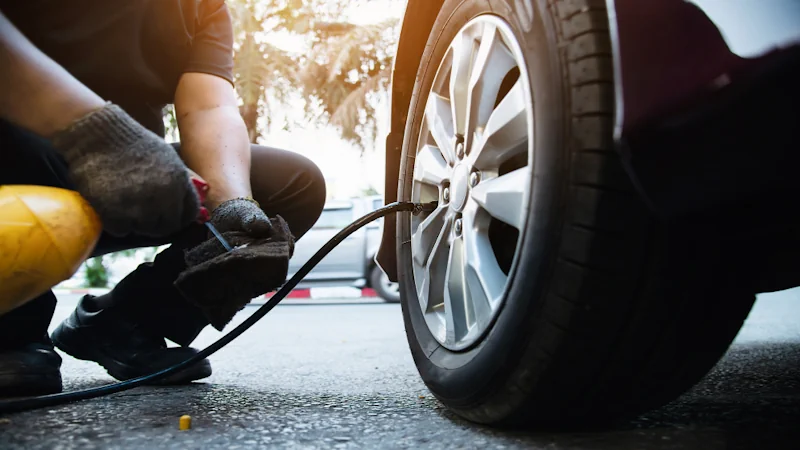
Use Jack Stands
Jack stands are used to elevate the car and take the weight off the tires. They are used during tire rotation or tire installation. However, you can also use jack stands to elevate your car for short-term storage (not suitable for long-term storage). Make sure to perform regular checks and see if the stands are secure and not causing damage to the car’s suspension.
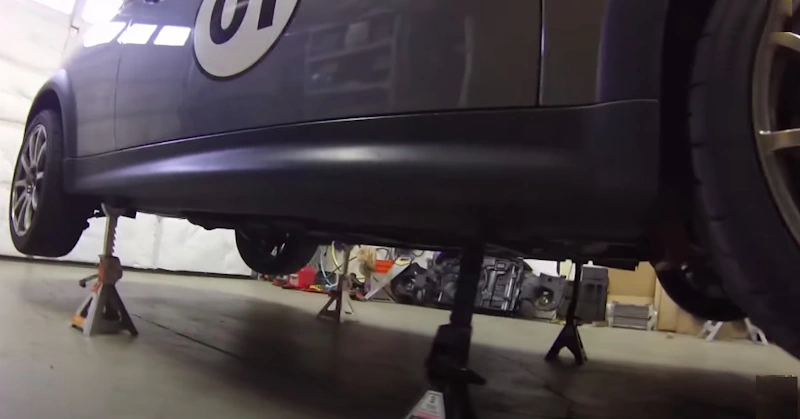
Other Considerations
- Plastic Sheets: Provide an additional layer of protection against moisture, dust, and debris. Using it with maximum inflation pressure and rubber mats provides 100% protection against all kinds of tire damage i.e. flat spots, cracking, and moisture damage.
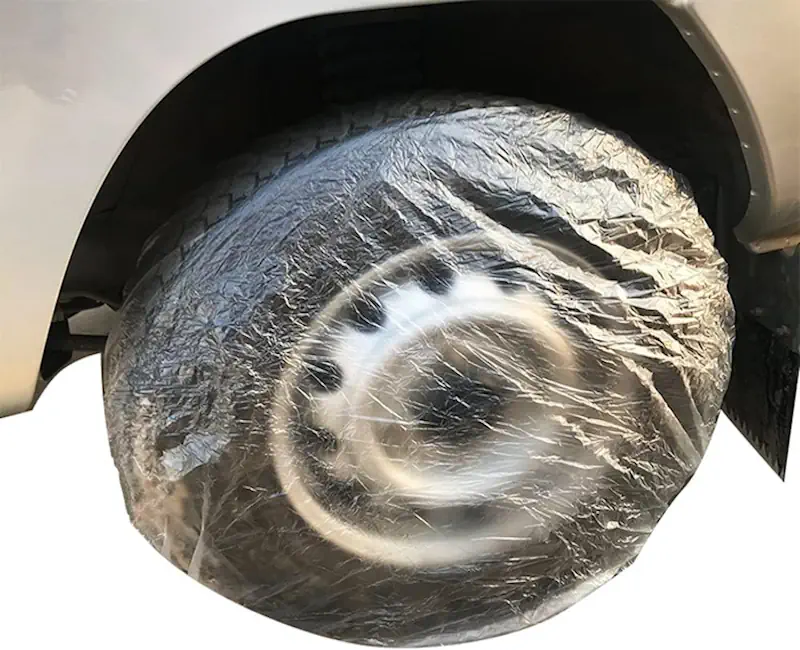
- Tire Cradles: Tire cradles are specially made to put them under tires during long storage. These are alternatives to wooden blocks and offer similar benefits in terms of weight distribution and protection against flat spots.
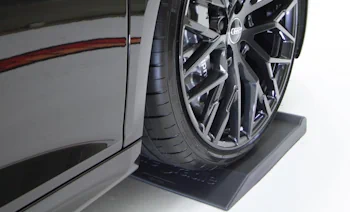
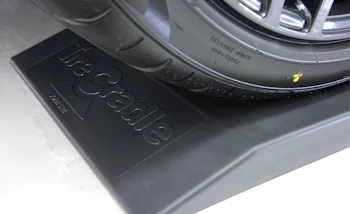
- Polyurethane Foam: Another option that you can put beneath the tires. They maintain tire position and provide a protective layer between tires and the ground, especially if the surface is rugged.
Before adopting any of the above methods, first, clean the tires and make sure they are completely dry before storing them.
Things to Do Before Storing Your Car for a Long Duration
- Necessary maintenance
- Choose a suitable location for storage
- Disconnect car battery
- Cover the car
Necessary Maintenance
- Make sure your fuel tank is full. This prevents moisture accumulation and rust formation inside the tank. Don’t forget to add the appropriate amount of fuel stabilizer in the fuel tank. It can preserve the liquid fuel for up to 12 months.
- Replace old engine oil with fresh oil. Old engine oil harms the engine parts due to contaminants during long storage.
- Fill up essential fluids like coolant, power steering, brake fluids, and transmission fluids. Checking the coolant’s freezing point is crucial for cold environments.
Choose a Suitable Location for Storage
Always store your car in a well-ventilated and moisture-free garage. A heated garage is a better option but I know not many of you can afford it. Your garage should be sealed against rodents, which can damage the car and tires.
Disconnect Car Battery
Before storage, fully charge the car battery. After charging, remove the battery terminals to prevent discharge.
Cover the Car
Use a good quality cover to protect against dust and moisture. A car cover also serves as a barrier against external elements like animals.
Additional Steps for Optimal Car Storage
- Clean and wax the car exterior and remove any debris from the interior using a vacuum cleaner. This prevents damage to the paint and keeps the interior fresh.
- Remove mud, tar, and grease from the tires.
- Instead of parking brakes, use chocks or tire stoppers.
- Place mothballs, garlic, or camphor in the garage to repel the rodents.
Conclusion
Storing your car without proper technique can damage it, especially when it comes to tires as they are the only parts that contact with the ground. As I mentioned above, combining two or three methods provides complete protection against tire flats. The key is to choose a method that suits your car’s needs and storage duration.
Remember, a little effort now can save you significant trouble and expense later!

